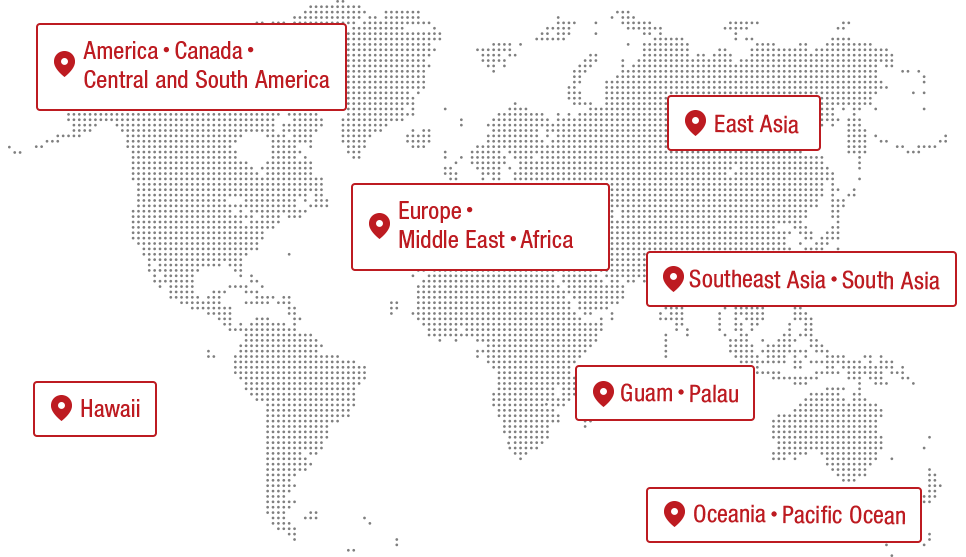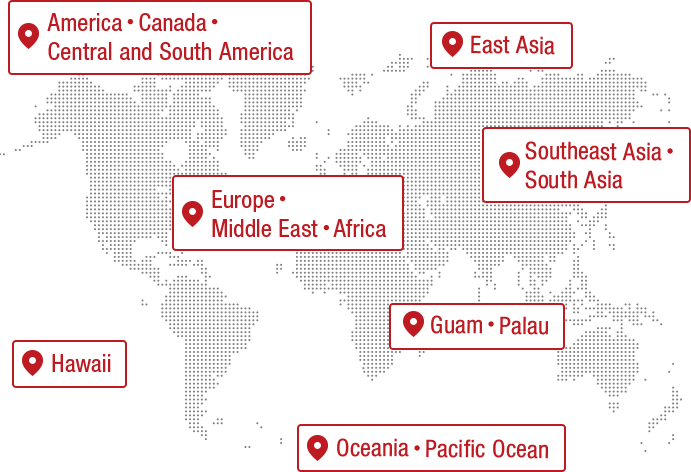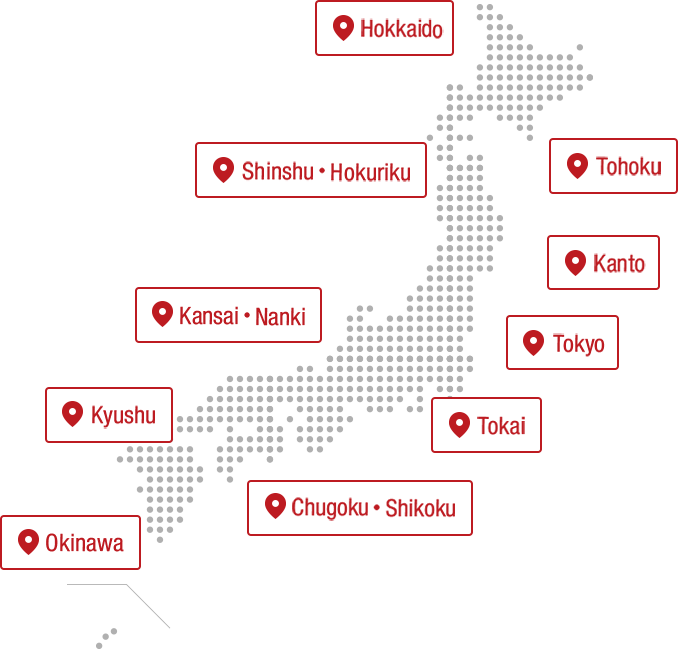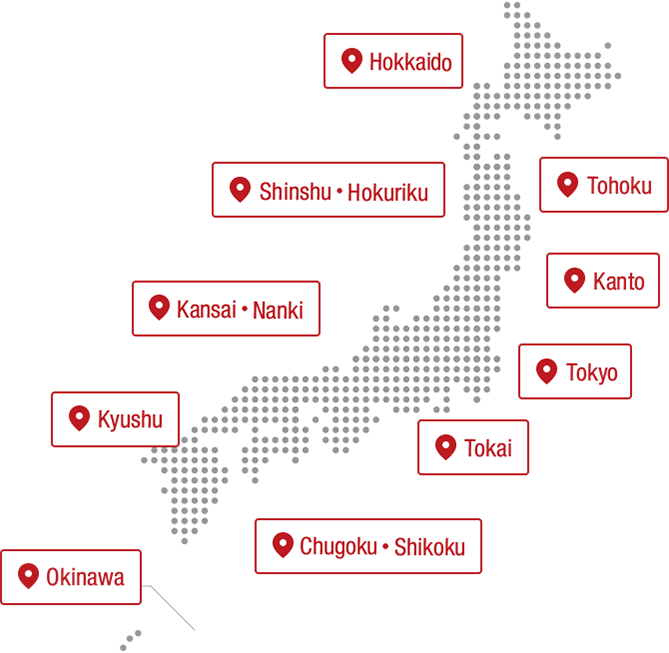
*Prices include tax.
INDEX
- Sweets and sugar from the South and West were introduced to Edo from Dejima in Nagasaki.
- Sofukuji Temple, a national treasure that gave birth to the Fukusaya bat crest
- A collection of artisans depicting confectionery-making in the Edo period (illustrations of confectionery-making)
- Refreshing and rich! Nagasaki Minamiyamate Pudding - a great accompaniment for your stroll
- The old Sugar Road in Isahaya City
- The sturdy "Meganebashi Bridge" was built with the hope of never being destroyed
- Sweet and savory. Simple and delicious Omura sushi from Umegaeso
- If you're planning on spending the night on your Sugar Road trip, head to Ureshino Onsen
- Muraoka Souhonpo, a prestigious yokan maker in Kyushu
- The charming streetscape of Yanagimachi
- Colorful flavors are popular: "Cream Design"
- Tokiwabashi, the end point of the Sugar Road
Nagasaki in early summer. On this day, the humidity feels pleasant on the skin, and when I look up, I see the clouds drifting by quickly. The starting point of this journey is the center of Nagasaki city, about 40km from Nagasaki Airport.

Dejima in Nagasaki flourished as a gateway for trade for a long time during the Edo period, and brought with it a variety of cultures. One of these was sugar. Nagasaki is famous for castella cake, and sweets of Nanban origin are made all over Kyushu. These sweets and sugar-related cultures adorn the Nagasaki Kaido, commonly known as the "Sugar Road," which runs to Honshu, and was designated a Japan Heritage Site in 2020.
Sweets and sugar from the South and West were introduced to Edo from Dejima in Nagasaki.

The journey begins at Dejima in Nagasaki, the starting point of the Sugar Road. It is a fan-shaped artificial island of about 15,000m2 that was built during the Edo period. In modern times, the surrounding area has been reclaimed, but restoration work is currently underway, bringing back the scenery of the early 19th century.

Dejima was the only place permitted to trade with Western Europe during the Edo Shogunate's policy of national isolation.

Sugar imported through the Netherlands was stored in storehouses on Dejima. The original buildings, including the first storehouse made of earthenware, have been restored.

At its peak in 1759, the amount of white sugar and rock sugar imported reached over 1,200 tons. Inside the third storehouse, replicas of burlap bags filled with sugar can be seen, giving a glimpse into the sugar culture that has been passed down along the Sugar Road.
Dejima Dutch Trading Post Site
| address | : | Nagasaki Prefecture, Nagasaki City, Dejimamachi 6-1 |
|---|---|---|
| phone | : | 095-821-7200(出島総合案内所) |
| Opening times | : | 8:00-21:00 (last entrance 20:40) |
| Regular Holiday | : | Open daily |
| Admission fee | : | Adults 520 yen / High school students 200 yen / Elementary and junior high school students 100 yen |
| web | : | https://nagasakidejima.jp |
Sofukuji Temple, a national treasure that gave birth to the Fukusaya bat crest

Counted among the four temples in Nagasaki, this Obaku sect temple boasts a Chinese-style building. It was built by a Chinese monk from Fuzhou, Cho-nen, who was invited to the temple. It is said that donations of sugar were often made here. The Daiippo-mon Gate and Daiyu-hoden Hall are designated as national treasures.

The Chinese-style temple architecture is lined up, brilliantly colored and majestic. It has a different feel to Japanese temple architecture. Among them, the most unusual is the Masodo, a temple dedicated to Mazu, where Chinese shipowners prayed for safe voyages.

There is also a huge cast iron kettle on the temple grounds. This was used by the head priest to serve food during the great famine that occurred in 1682 (Tenwa 2). At the time, Fukusaya, a rice dealer, donated 32 bales of rice to the kettle.

In return, Sofukuji Temple sent a bat crest. Fukusaya is famous as the long-established store that originated castella cake, and its bat logo is based on this anecdote.
Sofukuji Temple
| address | : | Nagasaki Prefecture, Nagasaki City, Kajiyacho 7-5 |
|---|---|---|
| phone | : | 095-823-2645 |
| Opening times | : | 8:00~17:00 |
| Regular Holiday | : | Open daily |
| Admission fee | : | Adults: 300 yen |
A collection of artisans depicting confectionery-making in the Edo period (illustrations of confectionery-making)
Confectionery making has been popular in Nagasaki since ancient times. If you want to recall the work of the craftsmen of that time, head to Matsumori Tenmangu Shrine. The transom of the main shrine's Mizugaki (a sacred fence) features 30 panels engraved with the work of craftsmen, known as "Shokunin Zukushi," one of which depicts a "diagram of confectionery manufacturing." This magnificent piece of joinery, designated as a tangible cultural property by the prefecture, is highly valued not only as a historical document but also as a work of art.
Nagasaki Tenjin Matsumori Tenmangu Shrine
| address | : | Nagasaki Prefecture, Nagasaki City, Kaminishiyamamachi 4-3 |
|---|---|---|
| phone | : | 095-822-7079 |
| web | : | https://www.matsunomori.com/index.html |
Refreshing yet rich! Nagasaki Minamiyamate Pudding - a great accompaniment for your stroll

Nagasaki is a city of hills. If you get tired from walking around, take a break with some sweets, just like on Sugar Road. "Nagasaki Minamiyamate Pudding Main Store" is a pudding specialty store located along Glover Street on the way to Oura Cathedral. They are carefully handmade using carefully selected ingredients from Kyushu.

There are about 10 kinds of puddings on offer at all times, with the most popular being the Minamiyamate Stained Glass Pudding (450 yen). This is a masterpiece that uses jelly to express the beauty of the vibrant stained glass of Oura Cathedral. Enjoy the contrast between the refreshing texture of the jelly and the smoothness of the rich custard cream.
Nagasaki Minamiyamate Pudding Main Store
| address | : | 2-11 Minamiyamate-cho, Nagasaki City, Nagasaki Prefecture |
|---|---|---|
| phone | : | 095-895-8886 |
| Opening times | : | 10:00~18:00 |
| Regular Holiday | : | Open daily |
| web | : | https://nagasaki-pudding.com |
The old Sugar Road in Isahaya City

There are base towns along the Sugar Road. After Nagasaki, you'll come to Isahaya City. The Omura Highway, which still retains the appearance of a road from the Edo period, has been selected as one of the "100 Best Historical Roads" by the Agency for Cultural Affairs. The stretch from Warigoimachi in Isahaya City to Suzuriishi on the border with Omura City is also a designated historic site by Isahaya City. Along the way, there are stone guard posts that inspected passersby and their luggage. It's a recommended hiking course.
Omura Kaido (Isahaya City)
| address | : | Haragoicho, Isahaya City, Nagasaki Prefecture |
|---|---|---|
| access | : | Prefectural bus "Hakoi" 5 minutes walk |
The sturdy "Meganebashi Bridge" was built with the hope of never being destroyed

If you visit Isahaya City, why not stop by Meganebashi Bridge? It is the first stone bridge in Japan to be designated an Important Cultural Property by the national government. Isahaya Park, where the bridge is located, is an area in the city center that was created by turning the former Takashiro Castle site into a green space. It is a place of lush greenery where fireflies dance in the summer. The sturdy bridge, built in 1839 with the hope that it would never be destroyed, stands in tranquil harmony with nature and continues to play an important role in the lives of locals today.
Spectacles Bridge (Isahaya Park)
| address | : | 770-2 Takagicho, Isahaya City, Nagasaki Prefecture |
|---|---|---|
| phone | : | 0957-22-1500(諫早市緑化公園課) |
Sweet and savory. Simple and delicious Omura sushi from Umegaeso

The history of kakuzushi topped with shredded egg is long, dating back to the Sengoku period. It is said that Omura Sushi was created by Omura Sumikore, the head of the Omura clan who ruled this area, to thank his vassals for recapturing his territory. Since then, it has become an indispensable local dish at local celebratory occasions.

At Umegaeso, which was founded in 1894 by the Omura clan's kitchen keeper within Kushima Castle, you can enjoy the Omura sushi set meal (1,500 yen). It is a colorful dish containing vegetables stewed in a sweet and spicy millefeuille style. It has a subtle sweetness and is delicious, with a warming taste that brings back memories.

For a takeaway souvenir, try the famous Umegaeda Yaki (130 yen). It is a crispy, hot rice cake wrapped in a thin skin with smooth bean paste and cooked on a hot plate. It is said to be very popular as a companion to cherry blossom viewing.
Umegaeso
| address | : | Nagasaki Prefecture, Omura City, Kushima 1-36 |
|---|---|---|
| phone | : | 0120-52-1389 |
| Opening times | : | Weekdays 10:00-16:00 Weekends and holidays: 10:00-17:00 |
| Regular Holiday | : | Wednesdays from July to February |
| web | : | https://umegaesou.site |
If you're planning on spending the night on your Sugar Road trip, head to Ureshino Onsen

If you're planning on spending the night on the way to Sugar Road, why not stop by Ureshino Onsen? It's known as one of the biggest hot spring areas in Western Kyushu. It's actually counted as one of Japan's top three hot springs for beautiful skin. The thick spring water is a sodium bicarbonate spring that contains a lot of sodium.
Ureshino Onsen
| address | : | Saga Prefecture, Ureshino City, Ureshino Town, Oaza Shimojyuku |
|---|
Muraoka Souhonpo, a prestigious yokan maker in Kyushu

Along the Sugar Road, you'll want to try some classic Japanese sweets. Head to Ogi City, where the Gion River, chosen as one of Japan's 100 famous waters, flows and where the making of yokan (a confection made from bean paste) has spread due to its excellent water quality.

At Muraoka Sohonpo, there is the Muraoka Sohonpo Yokan Museum, which was renovated from a sugar storehouse built in 1941.

In addition to the exhibits that teach you about the history and culture of yokan, you can also sample traditional Ogi yokan. The red bean-colored Honeri and the red yokan made from Otebo beans have a gentle flavor. Both have a sugar layer on top, and the contrast between the crunchy and gooey texture makes this traditional Ogi yokan a fun souvenir to take home.

There are many different sweets on display at the shop. All of the sweets are made using traditional methods and come in cute, retro packaging.
Muraoka Souhonpo Main Store
| address | : | 861 Ogicho, Ogi City, Saga Prefecture |
|---|---|---|
| phone | : | 0952-72-2131 |
| Opening times | : | 9:00-18:00 (Museum open until 17:00) |
| Regular Holiday | : | Open daily |
| web | : | https://muraoka-sohonpo.co.jp |
The charming streetscape of Yanagimachi

The streets of Yanagimachi in Saga City, Saga Prefecture are full of charm. During the Edo period, it developed as a shipping hub by boat through the Meiji and Taisho periods. Many historical buildings stand side by side, conveying the atmosphere of a merchant town to this day.
Yanagimachi
| address | : | Yanagimachi, Saga City, Saga Prefecture |
|---|
Colorful flavors are popular: "Cream Design"

The final destination of the trip is Kitakyushu City. Let's take a quick sugar break here. "Cream Design" may be one of the newest styles in the ancient sugar culture.

From colorful gelato to ice cream cakes and ice cream bars, we "design cream" with a rich sense of style.

You can choose from single (420 yen), double (540 yen), or triple (600 yen) gelato, and premium flavors can be ordered for an additional 70 yen each.
The most popular is the premium flavor pistachio, and the combination with raspberry (double and premium flavor for 610 yen) is also popular. Not only does it look good, it also tastes great.
Cream Design
| address | : | Fukuoka Prefecture Kitakyushu City Kokuraminami Ward Kamisone Shinmachi 11-22 Sweet Shop FAVORI PLUS |
|---|---|---|
| phone | : | 093-473-0023 |
| Opening times | : | 11:00~17:00 |
| Regular Holiday | : | Based on sweet shop FAVORI PLUS |
| web | : | https://www.cream.design |
Tokiwabashi, the end point of the Sugar Road

Tokiwabashi Bridge is the end point of Sugar Road and our destination. Kitakyushu is a hub for traffic to and from Honshu. It is said that sugar that traveled along the Nagasaki Kaido boarded ships bound for Shimonoseki from here. Tokiwabashi Bridge was built in the early Edo period as a bridge connecting the residential areas of samurai and townspeople. The current wooden bridge was built in 1995 and matches the retro scenery.
Tokiwabashi Bridge
| address | : | 2 Muromachi, Kokurakita Ward, Kitakyushu City, Fukuoka Prefecture |
|---|
After the Edo period, sugar spread widely into the food culture of various parts of Japan. According to one theory, Japan is one of the countries in the world that uses the most sugar in cooking. This journey will allow you to trace the origins of sugar, which has literally become "integrated" into our lives. There are also plenty of other sights and gourmet foods related to the Sugar Road. Why not go on a colorful and delicious journey?
Related articles
The contents published are accurate at the time of publication and are subject to change.













